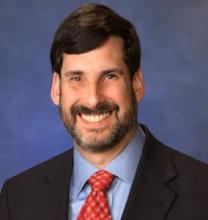IOM Report Both Gutsy And Gutless

You can’t get much more medical establishment than the Institute of Medicine (IOM), also called the National Academy of Medicine, author of the just-released “Improving Diagnosis in Health Care.” Yet in a chapter discussing the role played in diagnostic accuracy by clinician characteristics, there’s a shockingly forthright discussion of the perils of age and arrogance.
“As clinicians age, they tend to have more trouble considering alternatives and switching tasks during the diagnostic process,” the report said. Personality factors can cause errors, too: “Arrogance, for instance, may lead to clinician overconfidence.”
Wow. Sure, both those assertions are extensively footnoted and hedged later with talk of the importance. Still, given the source, this practically qualifies as “trash talking.”
Of course, those quotes didn’t make it into the press release. There, inflammatory language was deliberately avoided so as not to give opponents any easy targets. (Disclosure: I was an advocate of an IOM report on this topic while consulting to an organization that eventually helped fund it. After testifying at the first committee meeting, I had no subsequent involvement.)
Nonetheless, the 21-member committee’s diagnosis of the diagnostic error problem and its proposed steps to remedy it were thorough, evidence-based and relentlessly candid. The causes of diagnostic errors, the committee found, “include inadequate collaboration and communication among clinicians, patients, and their families; a healthcare work system ill-designed to support the diagnostic process; limited feedback to clinicians about the accuracy of diagnoses; and a culture that discourages transparency and disclosure of diagnostic errors, which impedes attempts to learn and improve.”
In short, this is a “call for major culture change,” said committee member Christine Cassel, M.D., chief executive of the National Quality Forum, in a webcast press conference.
In addition to endorsing training for clinicians to work collaboratively, the report stressed the importance of listening to patients and family members. That point was emphasized with a video of three patients telling personal stories.
To that end, the IOM suggested a definition of diagnostic error that it called “patient-centered.” A diagnostic error is “the failure to (a) establish an accurate and timely explanation of the patient’s health problem(s) or (b) communicate that explanation to the patient.” The committee also called for sharing of diagnostic information, including the clinician’s notes, with patients.
The IOM report that launched the modern patient safety movement was released in late November, 1999. (Unfortunately, this IOM report on error begins with an error, saying that report was 15 years ago, using the official publication date rather than the actual one.) That 1999 report focused on “errors of execution;” that is, clinicians not providing the intended therapy. The estimate then that 44,000 to 98,000 Americans die each year from preventable medical errors in hospitals and another 1 million are injured grabbed headlines and prompted a push for change that persists to this day.
It has taken until now for a report examining diagnostic error (errors of intent). Yet in the interim, as this report states clearly, we have not had a standard definition of diagnostic error, reliable collection of data or agreement on what to do to reduce those errors. So what changed from 1999 until now?
A fact I only learned due to the personal involvement I noted above is that IOM studies don’t happen unless someone pays for them. The funding for this one was jump-started by the Cautious Patient Foundation, but the final bill of more than $1 million still required a laundry list of government and private funders to ante up contributions. Take away the donors and, “devastating consequences” of diagnostic errors or not, there’s no report on eliminating them.
So while the IOM and its committee deserve plenty of praise for a job well done on diagnostic error analysis and prevention, let’s not forget the report no one has commissioned. How many more years must patients wait until someone pays the IOM to tackle outpatient error, as well?
Michael Millenson is a principal at Health Quality Advisors LLC. A version of this article originally appeared on The Health Care Blog.






